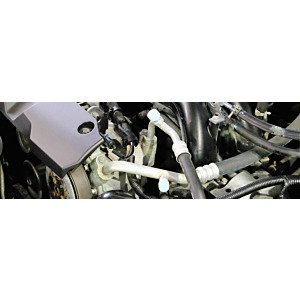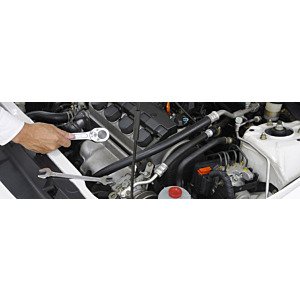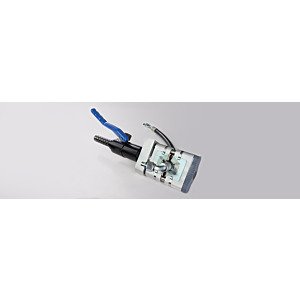Air-conditioning hoses and fittings


Air-conditioning hoses and fittings – general information
Cooling and air-conditioning installations utilize the change of cooling agent parameters (pressure, temperature and state) when it circulates between the evaporator and the condenser in the cooling system. The cooling agent circulates driven by the refrigerating compressor. The refrigerant absorbs heat by evaporation in the evaporator, then it gives up heat when vapour is condensed in the condenser. There are many types of refrigerants (water, carbon dioxide, ammonia), however there is one special type of low-boiling hydrocarbons, called freons.
Flexible freon hoses are widely used in air-conditioning systems of various vehicles (cars, machinery, trains, trams) as well as in smaller installations of industrial cooling. In these installations, freon (e.g. R134a, R1234yf) mixed with compressor oil (e.g. PAG synthetic oil) acts as a refrigerant. It circulates in the system where it undergoes continuous pressure and temperature fluctuations. Therefore, requirements concerning freon hoses are so high. It is essential for the system to be perfectly tight as freon is very penetrating, expensive and harmful to the environment. It must be highly resistant to pressure, temperature, chemicals and stop humidity from permeating the hose wall. It concerns automotive air-conditioning in particular because there, the freon hose operates in the engine compartment, tightly packed and bent, in high ambient temperature conditions, exposed to vibrations and in contact with car fluids.
The air-conditioning hoses, including those intended for cars are mounted with special types of fittings, often dedicated to one make or type of vehicle. For hoses for industrial air-conditioning, see also the group: steel hoses.
Basic information on refrigerants
A refrigerant is a substance that takes part in a heat exchange in a refrigeration unit. It absorbs heat through evaporation at low temperature and low pressure. As the refrigerant condenses at the higher temperature and higher pressure, heat is released. Refrigerants can be single-component or mixtures. These can be substances of natural origin ( ammonia, water, carbon dioxide), flammable gases and their mixtures (propane, butane), and synthetic agents – hydrocarbons, in which hydrogen atoms have been replaced by chlorine, fluorine, or bromine, producing non-flammable, low-boiling substances commonly referred to as freons (CFC). Refrigerants are usually designated by a numerical symbol preceded by the letter “R”, e.g. R12, R22, R134a. Because of their adverse effect on the environment (ozone depletion), the use of CFC refrigerants is restricted and some are banned – in newly manufactured or refilled equipment (e.g. R12, R22, R502).
3R12 – formerly the most popular refrigeration working fluid, widely used in household refrigerators, replaced by R134a.
R22, R502 – have been used in larger refrigeration equipment, are being replaced by newly developed blends such as R402A, R404A, R407, R507.
R134a – the most popular refrigerant, standard refrigerant in automotive air-conditioning systems
R1234yf – the latest refrigerant used in automotive air conditioning, intended to replace R134a.
Refrigerants are usually called with the brand name of their manufacturer e.g., Suva HP62, Suva MP52, Forane134a, Reclin 404A, etc. In addition to the refrigerants, there are lubricating oils used in the systems. Their effect on hose material and seals should always be considered. These oils include mineral oils (MO) and synthetic oils such as polyalphaolefins (PAO), alkylbenzenes (AB), and polyalkylene glycols (PAG).




